|
Teaching is a high-pressure, fast-paced and a highly responsive career. Teachers face a plethora of daily choices such as how to organize classrooms and curriculums, how to interpret students' behaviors, how to protect learning time, and how to create a safe learning environment. Many choices involve matters so routine that a teacher can make and implement decisions automatically. But teaching also involves complex choices about difficult problems that, if left unaddressed, often escalate or hinder students academic growth. A different type of process is needed in order to address these complex challenges and that process is called, design thinking. Design thinking is an intentional process to construct fresh, relevant, and creative solutions to old problems. This process allows students and teachers to look at broken systems within their classroom with lense for empathy to create a prototype that will fix a broken system. When I first heard about the Innovation In Teaching Fellowship I was immediately excited because I personally love to grow. I love the process of picking apart things in my classroom that didn’t work and figuring out how to make them better so this fellowship fit me perfectly. During the summer we participated in a Summer Design Sprint which breaks down what the Fellowship is all about. Throughout the experience,we also read two books called The End Of Average and Blended which both takes a 21st century look into education. One of the biggest things I realized is that over the past few decades things in our world have changed. In the industrial era it was important for students to develop a skill of memorization so they could be successful when they grew up in the career or trade they chose to participate in. As we continue in the 21st century I realized that critical thinking skills, problem solving skills, creative thinking skills, and innovation are critical in order for our students to be successful. One of the biggest lessons I learned from this entire process is that students do truly care about their learning. Students want to be involved in their learning path and when they are given the choice to decide how they will or the way in which they learn best, students really do begin to take ownership of the learning process. This year I included my 5th grade students in helping me determine how they will learn the reading standards they will need in order to be successful. As a collaborative group, so far they’ve increased their academic readiness by 42%. As students began to make decisions on how they would learn I saw them transform into students who are invested in school. They now love school so much that they beg their parents to drop them off early so they can come to my classroom to finish work, spend time with me, or begin redesigning other aspects of our classroom system. This level of engagement inside and outside of the classroom, has led to a decrease in office referrals and We have had very minimal behavioral distractions and when they do occasionally occur the other students in fifth grade help guide that student back on the right path. This year we worked on two design cycles. The first one I helped the students with and the second one was student led. Now students are identifying academic barriers and creating plans that address them on their own. As I continue to learn more about Design Thinking my hope is to bring it back to my campus and instill in them the importance of this process. The Innovation in Teaching Fellowship helped more than 40 teachers of all different backgrounds with various years of experience realize that we need to change the way we teach as well as the way our students learn in order for them to be successful in the 21st century. This program allows teachers to pick the path that fits into their current teaching assignment the best. I encourage any teacher who is thinking about how they can improve their classroom to join this fellowship because it truly helps you develop as a educator. The key to success in this fellowship is having a growth mindset. Once you trust the process you will truly begin to see your students flourish before your eyes.
0 Comments
Last year I had the chance to try my hand at a project based learning cycle for a geometry unit with my co-teacher. Not only was it fun and engaging, it brought out a different side of my students that I would never have unlocked if we stayed safe in our textbooks and pencils. That glimpse showed me that with a little extra searching, and a commitment to “one small change,” my classroom could look and feel more welcoming for all my learners, not just for those that fall in the middle. That experience motivated me to apply and join the Innovation in Teaching Fellowship. On the first day of our Design Sprint in June 2017 I was most surprised by how empowering it felt to be surrounded by other ambitious and inspiring educators. Here we were, all teaching a few miles from each other, and we would have never met if it wasn’t for this fellowship. It was a good reminder that we are all doing our best, while working against a myriad of obstacles. I heard from fellows about the lack of technology at their campus, their lack of team unity, wavering campus leadership, but what I didn’t hear from them is any indication of giving up. Before my school year even started, I left knowing that the fellowship would equip me with friends to bounce ideas off of and would encourage me to keep trying new things. Throughout the year I continued to look for moments of clarity that I was headed in the right direction. It was so helpful to have check-ins at our fellowship meetings. I longed for more time with other fellows to talk about how the year was going, what we were trying, and what we still needed help with. I kept thinking this was supposed to feel bigger, that I would feel different. However, I am realizing it is all a process and it is okay to innovate going two steps forward and one step back. I found that innovating in the classroom is much more than introducing fun technology options, or even being at a 1:1 technology ratio; it’s about pairing a mindset for growth with the best tools of the trade. This can start anywhere. Committing to one small change is alarming at first but once you see where that one change takes you it keeps you going toward another small goal. This school year might not look perfect and my changes may have felt small to me but I have become more equipped with a toolkit of ideas, resources, and people to help make me a better educator and more able to reach all learners where they are. This experience has helped me realize that all education is messy, as well as wonderful. And, it is up to me to continue bringing order, opportunity, and challenges to my students and to myself in new ways every day.
Change was what I yearned for since last year’s chaotic school year. Sticking to the basic teaching script was boring me. Activating prior knowledge, you do, we do, and etc. was just so repetitive. And as any educator knows, if you are not feeling it, the students aren’t either. A change in the lesson cycle was the key I needed to transform every student’s learning experience into an exciting one!
Both pathways (blended learning and project-based learning) were interesting and definitely in the right direction in terms of what I wanted to accomplish for the upcoming school year, but I decided the blended learning pathway was the right fit for me. It seemed to be teaching methods I could easily implement in my classroom. The blended station rotation sounded like centers, technology stations screamed Reasoning Mind, and students tracking data … sure that’s what ACE (Accelerating Campus Excellence) campuses do. I thought to myself, “I can do this!”, until leveling took place at my campus and I was no longer the third grade mathematics and science teacher, but the second grade one too. After leveling I had 27 second grade students in my tiny classroom during the morning and 22 third graders in the afternoon. I had to find a way to adapt to my new environment. The blended station rotation model was a life saver! It allowed me to group students based on needs, which in turn helped me focus on the lowest SEs with struggling students. It was a struggle at first. Teaching rules and not having access to Reasoning Mind at the end of September was something I never accounted for; however, as data would later show, it was for the best. Students did great on their ACPs (Assessment of Course Performance) in both grade levels. Technology was one of the greatest assets I had this year. I implemented it on a daily basis but then hit a wall when I thought every station rotation had to include technology. This is a misconception that many believe a blended learning classroom should look like. I quickly learned that it is just one of the stations you can utilize . MobyMax was one of the two technology stations I created. While utilizing MobyMax students would work at their own pace focusing on struggling SEs. I could even assign lessons that I felt were best tailored to their needs. This school year has been fun, challenging, and yet rewarding at the same time. Sure there are several aspects of the blended learning program I wish I had more time to implement; however, I now realize this is a lifelong process. As long as you keep the wheels in motion, and allow yourself time to improve upon the mistakes that have been made, you will succeed. I know when I have finally obtained my goal, there will be another component to the blended learning program that I will have to try. To me, innovation in education is an alteration in your instructional practices that will eventually lead to a breakthrough. The notion of one size fits all cannot and should not be applied to any classroom. Every student learns at a different pace and utilizes several resources to reach their full potential. In my opinion, traditional classrooms are not functioning as they used to. Many students fall behind when they do not acquire mastery of a skill. We must learn to adapt to this changing environment and not be afraid to get our hands dirty by trying new and exciting things in our classroom.
Raise your hand if you remember fighting over who gets to be the teacher when playing school? Whether or not you want to admit it, we all yearned to be the one standing in front of the Fisher Price chalkboard holding that fresh piece of white chalk. This meant you were in charge, and your classmates had to do whatever you wanted. For many, this same desire for creative control of the chalkboard is why we ended up in the classroom. Regardless of past experiences within our own schoolyards, we all have that innovative voice that builds upon, and then exceeded what our teachers did in the classroom and which would result in student success. At times, we see ourselves as being creative and “personalizing” the learning. Then, because it worked so well, we have each new class of students repeat the same activity or project. Cue the quick pat on the back we give ourselves. We even collaborate and share our successes with other teachers, encouraging them to try it. Give them exact plans, materials, what to do, and what not to do. But what about this is innovative? What about this brings to light the varied success of our students? If we want innovation in the classroom, we need to personalize the learning. Merriam-Webster defines personalize as: Personalize; to make personal or individual; specifically: to mark as the property of a particular person (Merriam-Webster, 2018). Education is not a one size fits all situation, and as Webster emphasizes, personalization is the property of a particular person. Learning needs to become the property of our students. In order for authentic learning to transpire in the classroom we need to teach our students to own their learning. This is something I always agreed with and thought that I was great at. I would teach my students something new, watch them show mastery on their own (just as I had modeled), and I would feel proud. I would think, “Wow, my students are really owning their learning! I rock at this.” Only, there was a problem: they weren’t owning their learning, they were owning my learning! Having now been in the Innovation in Teaching Fellowship; going through all the workshops, design cycles, and PL learning excursion to observe other schools, I’ve definitely had my “ah ha” moment. I have realized the biggest key to my students’ success. In order for innovative learning to successfully manifest itself within my classroom, I need to truly hand over the keys to learning. I need to sign over the deed to the house, not just give my students renters’ rights. Though I always thought and said that I truly believe students should own their learning, I wasn’t giving them complete ownership. As I reflect on my history as an educator I see that I was simply renting out the house. My students’ could roam free within the walls of the house I owned, but I never signed the house over to them to own. Ask yourself, are you renting learning to your students or handing over the deed? If you are still the landlord I encourage you to sell. “Personalize.” Merriam-Webster.com, Merriam-Webster, www.merriam-webster.com/dictionary/personalize. Accessed 19 Feb. 2018.
Over the past four years, the central PL team has found that one of the best ways for educators to see personalized learning firsthand, grow professional networks, and be inspired to innovate within their own learning spaces is by going beyond their school walls and participating in learning excursions. Destinations like Denver, Colorado provide the perfect opportunity to learn more about the successes and struggles of districts and charter networks transforming education to better meet the needs of students with a more personalized and innovative approach. The central PL team recently traveled with campus leaders from two district high schools, as well as teachers participating in the current cohort of the Innovation in Teaching and Learning Fellowship, a 10-month teaching fellowship rooted in user-centered design to re-imagine how we educate every kid in Dallas ISD. Over the course of two days, our educators connected with students, teachers, and leaders at schools, visited classrooms and advisories, asking questions and reflecting on their own practice along the way. After her time visiting schools in Denver, Amanda Jones, an Innovation in Teaching Fellow from Bryan Adams High School, was inspired by how “an ordinary school day can be transformed when leaders rethink all that’s possible within an ordinary school with ordinary time constraints and strive to redesign existing school structures to offer truly extraordinary experiences for students.” Amanda was energized and committed to exploring how she structures time in her classroom in order to build stronger relationships with her students. Heather Houston, a Fellow from Rosemont Elementary could not wait until she got back to Dallas to implement more flexible seating after her visits, literally. Using an app for buying and selling furniture, Heather’s classroom became instantly more flexible before she even got home. Visits can also reaffirm what is working well within your learning space. Jose Delgado, a Fellow from Bryan Adams High School, felt refreshed after seeing advisory models in place that help support students and work towards skills beyond a typical curriculum in action, a practice his campus is currently implementing. Richard Kastl, Principal of Bryan Adams High School, was committed to continuing building capacity with teachers around their use of blended learning strategies in the classroom.  Fellows and campus leaders campout for the afternoon at Lone Tree Elementary in Lone Tree, Colorado outside of Denver (Back Row: Vanessa Roper - Kiest Elementary, Alexander Vela - Umphrey Lee Elementary, Courtney Rogers - PL Central Team, Carmen Sanchez - Salazar Elementary, Nicolette Luna - Salazar Elementary, Yoely Alfano - Salazar Elementary. Front Row: Kristen Watkins, Director of Personalized Learning, Krystal Sanchez - Rosemont Elementary, Heather Houston - Rosemont Elementary, Nicole Bixby - Salazar Elementary, Tia Fuentes - Salazar Elementary, Matthew Hight - Joe May Elementary) Interested in planning a learning excursion, but not sure where to start? Whether it is down the road or across the country, here are some things we consider before takeoff - Plan with purpose
We’re excited to re-introduce the PL Toolbox! Back in the summer of 2015, when the PL Coaching and Development rubric was initially created, we immediately knew we needed to unpack what these teacher actions and student actions looked like across proficiency levels. With the help of our school leaders and teachers, we set out to create look-fors for each rubric row, resources, and professional development aligned to each rubric row. Over the past three years we have been working to develop resources and tools to help educators make the shift from a more traditional to personalized environment. After a few fail attempts of sharing this in a meaningful way, the PL Toolbox was born. To learn more about the rubric and toolbox, make sure to check out the introduction video below: If you’ve visited and used the PL Toolbox in the past, you’ll notice a few upgrades:
It's here- the next iteration of the Dallas ISD Personalized Learning (PL) Coaching and Development Rubric! We've learned a lot over the past three years about what it takes to provide students with a personalized environment in the classroom as well as what kind of supports teachers need in transitioning to PL. Since inception, this tool has served as the centerpiece for the training and support teachers receive and as a personal guide through implementation. We're proud that over the years, this tool has remained non-evaluative in nature and one that folks are continuing to use to refine their own practice. After spending the last couple months reflecting alongside our school leaders and teachers and revisiting the four domains and sixteen teacher and student actions, we're ready to share our lessons learned. Below you'll find, lessons learned, revisions, and rationale for changes to the next iteration of the PL Coaching and Development rubric by domain. Click here to download the extended rubric. Assessment and Data Updates are reflected in green below. The biggest upgrade to the Assessment and Data domain is that the original phase 2 and 3 have been swapped so that student feedback is prioritized before addressing authentic assessments. In year one of implementation, we quickly realized what an oversight this was on our part, and how important timely, frequent, and specific feedback is for the learning process. When the rubric was initially drafted in the summer of 2015, we were optimistic about authentic assessments as something we'd achieve by year two. After spending almost four months digging in, we also realized that in order to ask students to demonstrate learning through authentic formative and summative assessments, we first had to have aligned and rigorous formative and summative assessments- which is something we're still working on.  Instructional Rigor Updates are reflected in green below. When retooling the Instructional Rigor domain, we swapped the original phase 1 and phase 2 so that student access to varied and rigorous learning experiences was first. Many of our teachers in focus groups pointed out that having differentiated learning objectives in phase 1 was actually harder than creating varied learning experiences. They also pointed out that when transitioning to personalized learning, that it was manageable to write one learning objective and build the muscle first in creating varied learning experiences. Student grouping intientially lived in this domain, but when we made the decision to give Equity it’s own domain, we knew this indicator belonged there. Student Agency Updates are reflected in green below. What perhaps is one of the biggest lessons learned over the first two years of implementation, is how difficult it can be to set and truly monitor progress towards individual academic and non-academic goals with every student. Before personalized learning, teachers consistently set class goals and/or targets for groups of students that were similar to '80% of us will pass the <insert grade level and content> STAAR test' for the XXXX school year. When making the shift from class or grade level goals to individual goal-setting, we took for granted the role trust plays into empowering students to set academic and non-academic goals that are meaningful. For this next iteration of the rubric, we've incorporated an additional row to reflect this teacher move. Classroom Culture Updates are reflected in green below. This domain originally felt heavy on side of compliance and one we thought needed more joy! In this next iteration of the rubric we cleaned up some of the indicators in the practicing and achieving column to highlight more celebrations and students who are joyfully engaged. In the class row, we refer to as 'belonging' we added students defining their own purpose for the achieving proficiency level and then shifted the original descriptors down (to the left) a proficiency level. Equity
Updates are reflected in green below. For us, adding equity to the next iteration of the rubric was necessary, but we spent most of our time debating on where equity would live within the rubric. As a result, we decided to intentionally call out what equity looks like in a PL classroom, specifically around bias, identity, access, and expectations. We are hopeful this domain serves as a starting point for action and reflection over a topic that can be challenging and uncomfortable at times, but is ultimately at the heart of what is right by kids. |
Brought to you by the Personalized Learning Department at the Dallas Independent School District.
Categories
All
Archives |

This work is licensed under a Creative Commons Attribution-NonCommercial-ShareAlike 4.0 International License.
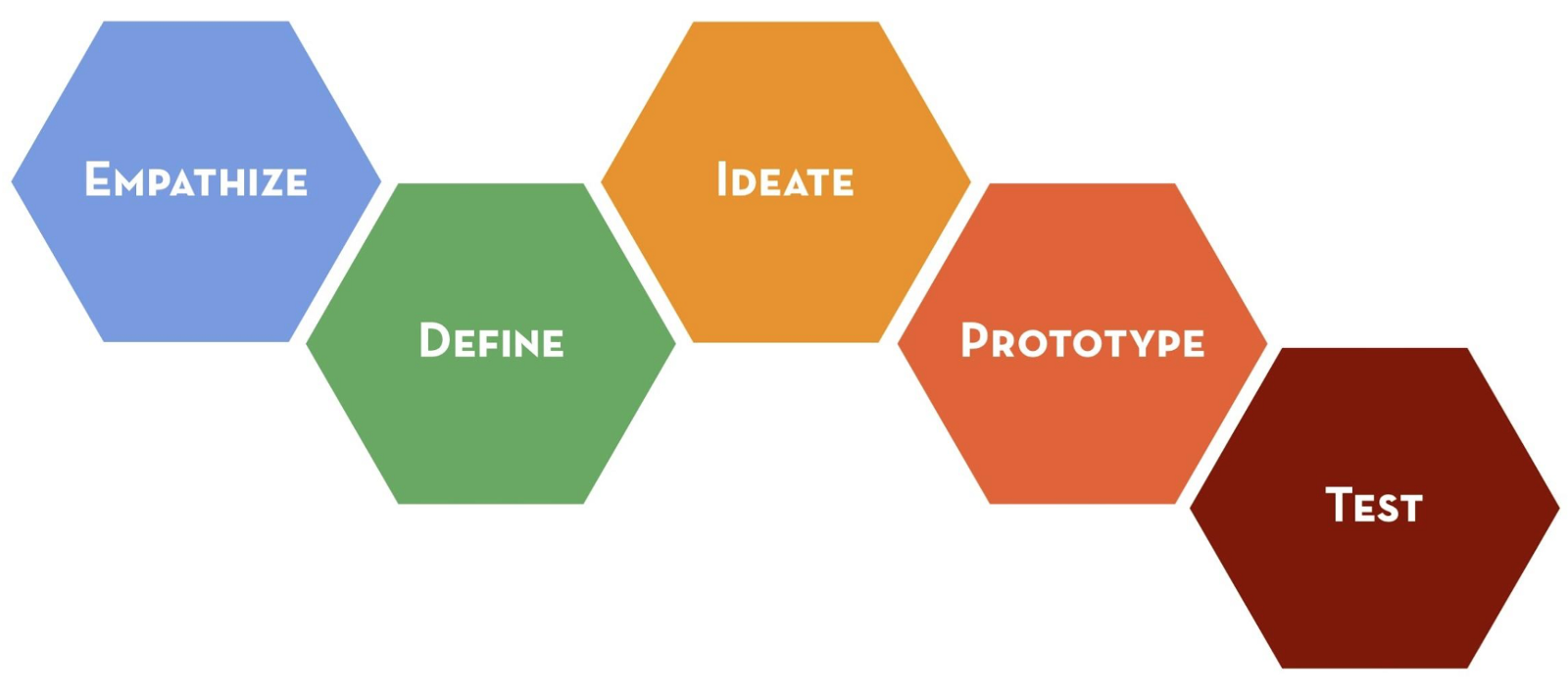
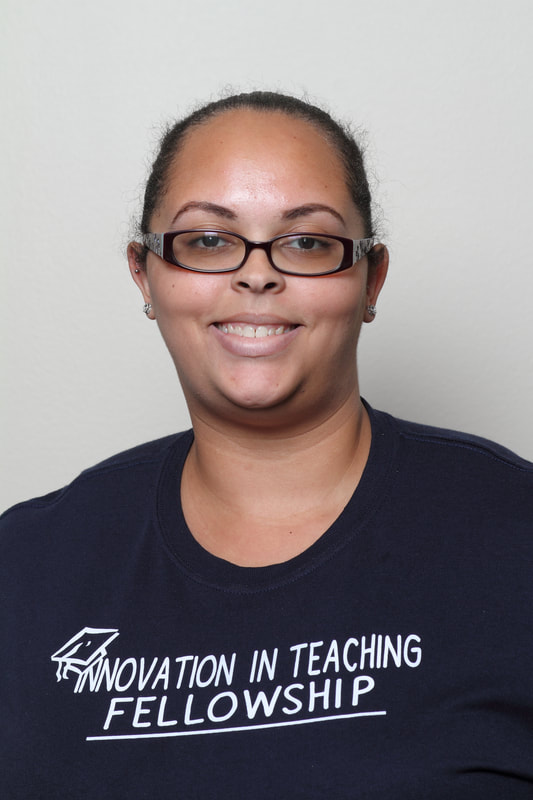
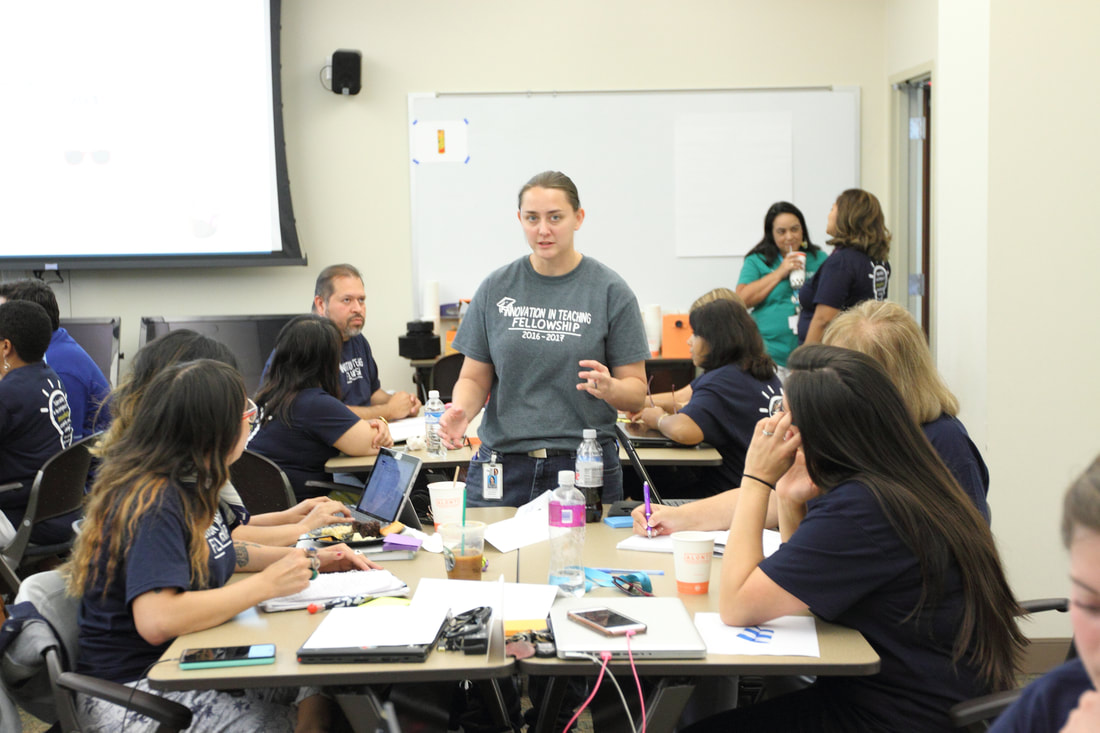
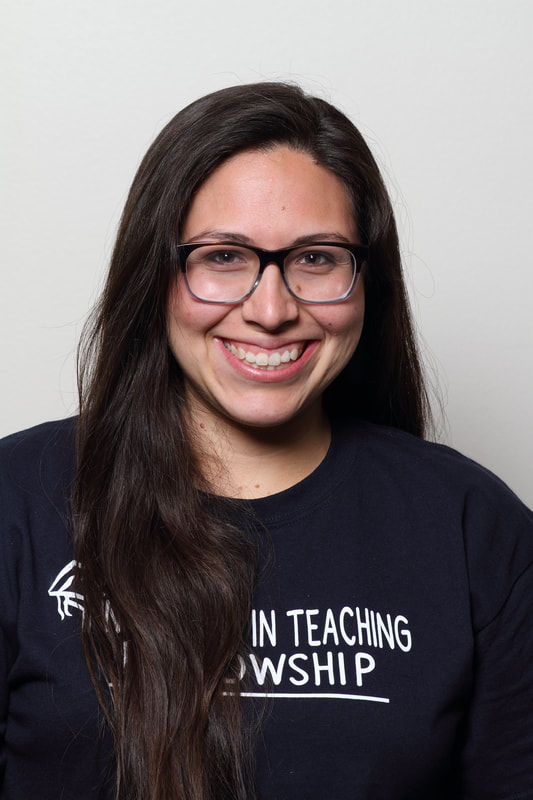
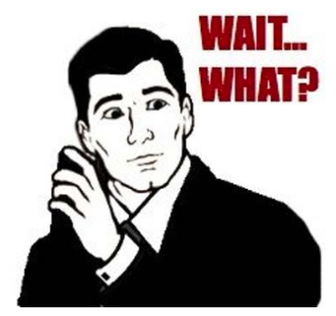
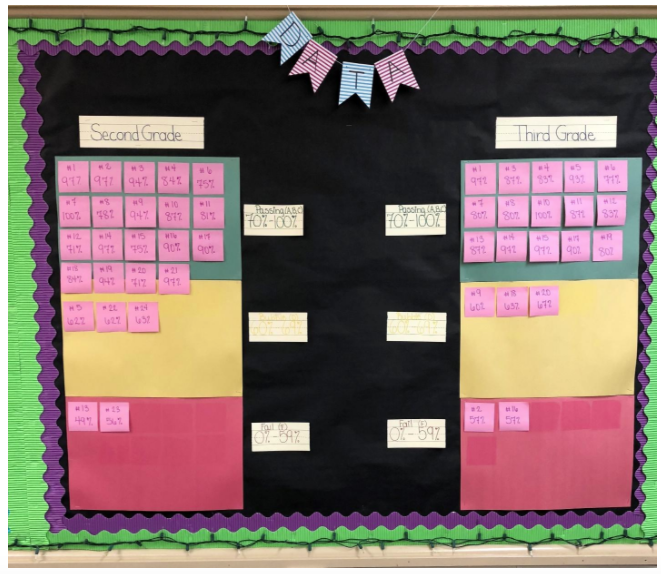


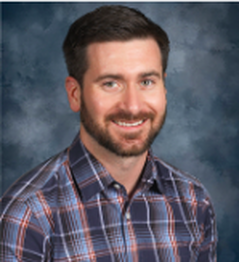

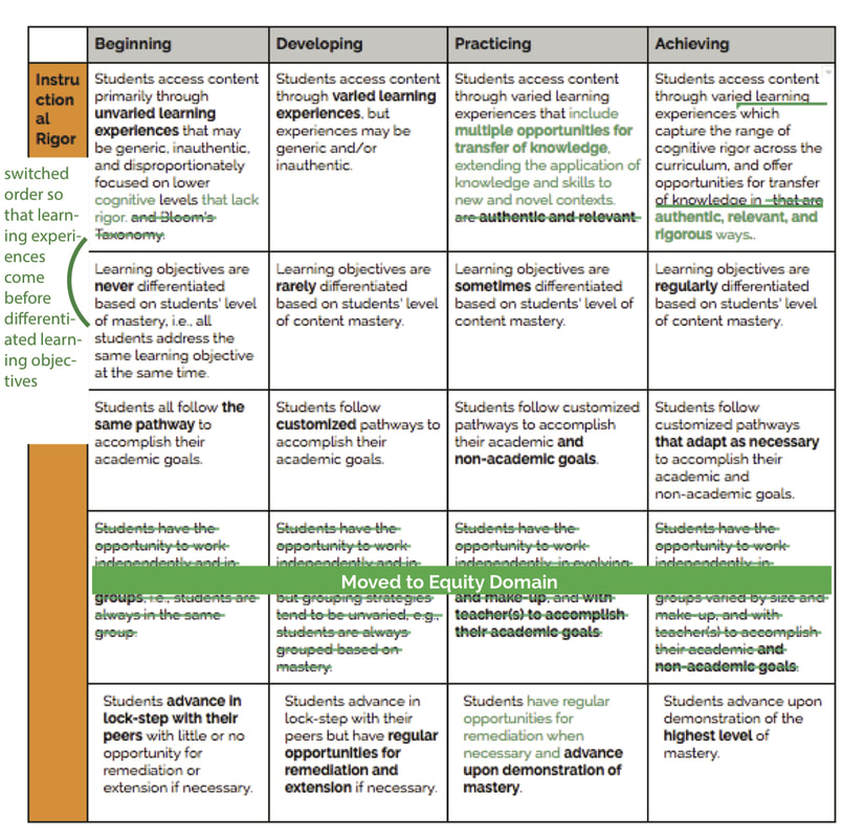
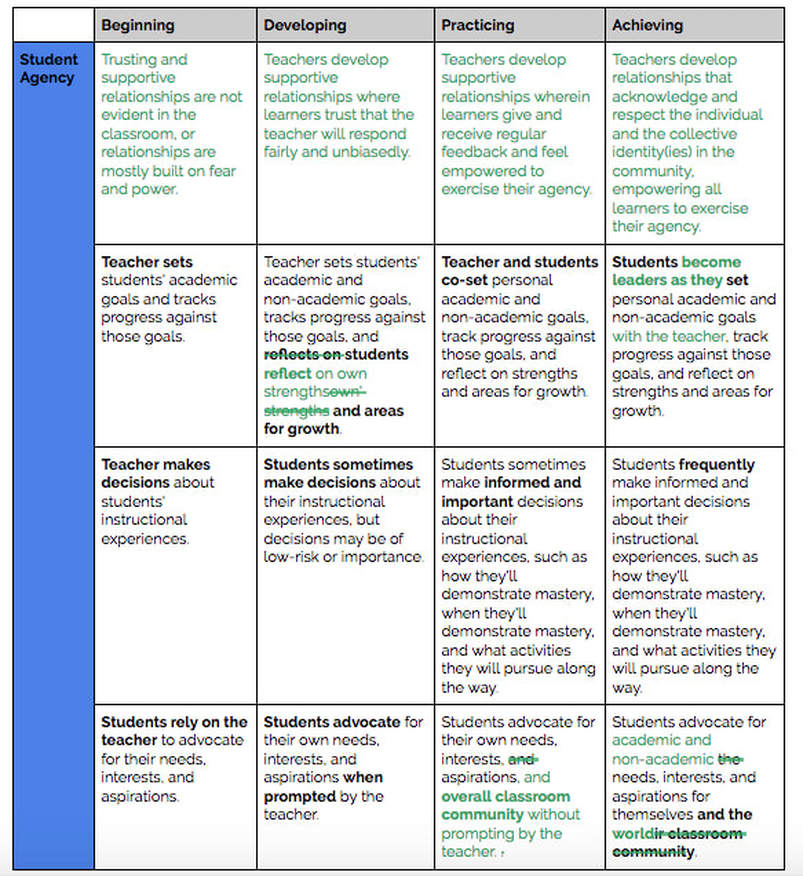

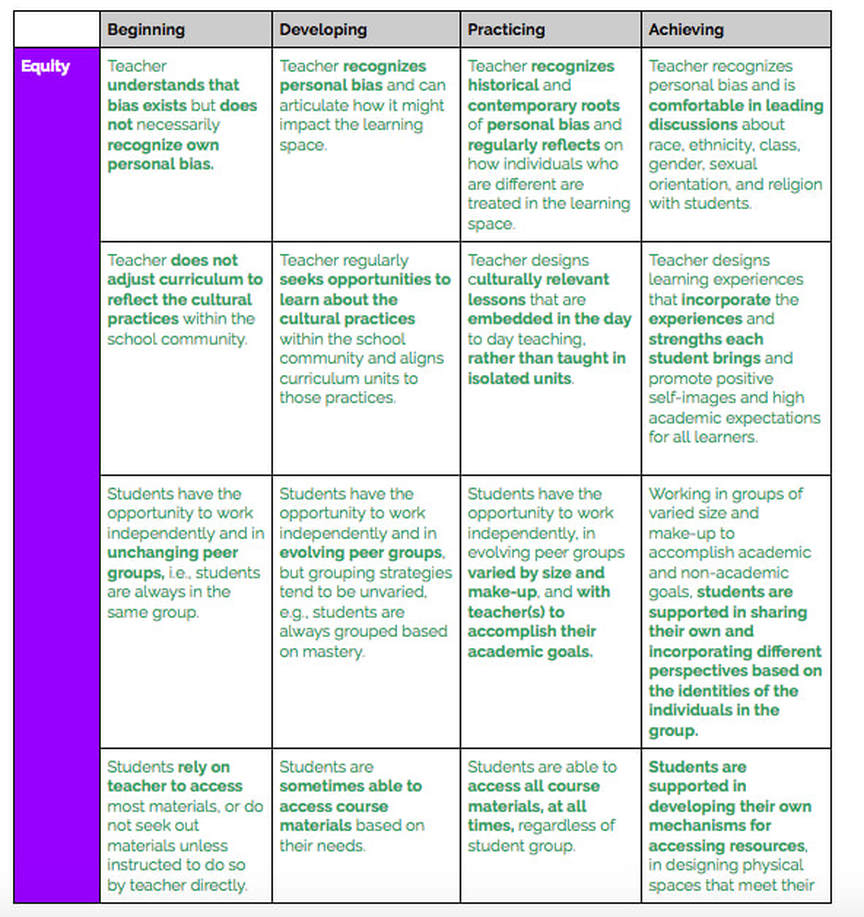
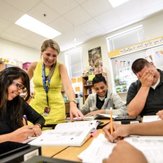
 RSS Feed
RSS Feed
